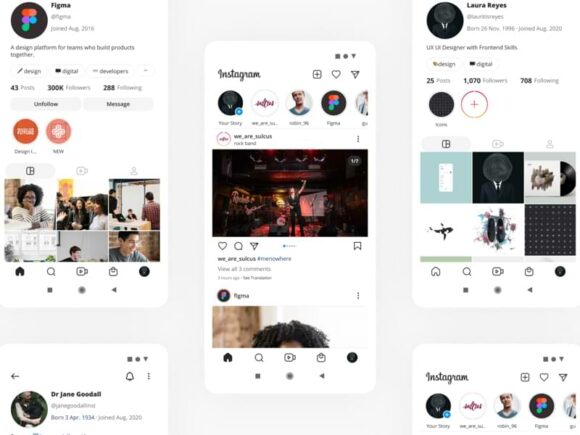
Introduction
If you are new to web design and looking for an easy-to-use tool, Figma is a great choice. It is a web-based design tool that helps beginners create beautiful websites without needing advanced design skills. In this guide, we will cover everything you need to know about Figma for beginners. Whether you are learning Figma for beginners or want a Figma tutorial for beginners, this article will walk you through the basics of Figma web design for beginners. With Figma web design, you can easily create professional-looking layouts and prototypes without any prior experience.
What is Figma?
Figma is a cloud-based design tool used for UI and UX design. It allows designers to create website layouts, wireframes, and prototypes. Unlike other design software, Figma does not require installation and works directly in your web browser.
Why Use Figma for Web Design?
Easy to Learn – Figma is simple to use, making it perfect for beginners.
Cloud-Based – You can access your designs from anywhere, on any device.
Collaboration Friendly – Multiple people can work on the same project in real time.
Free Plan Available – Beginners can start with a free version before upgrading.
Powerful Features – Figma offers features like auto-layout, prototyping, and design components.
Getting Started with Figma
If you are new to Figma, follow these steps:
Sign Up – Go to figma.com and create a free account.
Create a New File – Click on “New File” to start designing.
Understand the Interface – The interface consists of a toolbar, layers panel, and design canvas.
Learn Basic Tools – Figma provides tools like shapes, text, images, and frames.
Basic Tools in Figma
How to Design a Website in Figma
Frames – These act as artboards where you create your design.
Shapes – Use rectangles, circles, and lines to build UI components.
Text Tool – Add headings, subheadings, and paragraph text.
Color & Styles – Customize colors and create design styles.
Prototyping – Create interactive buttons and navigation links.
Let’s go through a simple process to design a website in Figma.
Step 1: Plan Your Website
Before designing, have a clear idea of your website’s purpose and layout. Look for inspiration from existing websites and note down essential sections like the header, hero section, about us, services, and contact. Figma web design allows you to structure these sections efficiently while maintaining a visually appealing layout. By utilizing Figma web design, you can create a seamless and user-friendly website design.
Step 2: Create a Frame
Click on the Frame Tool (F) and choose a desktop or mobile layout.
Set dimensions (e.g., 1440px width for desktop, 375px for mobile).
Step 3: Add a Header
Use the Text Tool (T) to create a logo and menu items.
Add a rectangle to create a navigation bar.
Use the Auto Layout feature to align elements properly.
Step 4: Design the Hero Section
Add a large image or gradient background.
Include a headline and a call-to-action (CTA) button.
Step 5: Create Content Sections
Use grids to structure your design.
Add images, text, and buttons to different sections.
Maintain consistency with fonts and colors.
Step 6: Add Footer
Include contact information and social media links.
Keep the footer design minimal and readable.
How to Make Your Design Interactive
Prototyping – Connect different screens to create clickable elements.
Create Buttons – Add hover effects to buttons for a better user experience.
Test Your Design – Use the “Play” button to preview your website prototype.
Figma Tips for Beginners
Use components for repeating elements like buttons and icons.
Apply grids to maintain alignment.
Use plugins to enhance design (e.g., icons, illustrations, stock images).
Keep your design simple and user-friendly.
Resources
To enhance your learning, check out these resources:
Conclusion
Figma is an excellent tool for beginners who want to design websites effortlessly. By following this beginner’s guide to Figma, you can start designing stunning websites in no time. Whether you are just exploring Figma beginner concepts or looking for an in-depth Figma tutorial for beginners, this guide provides a strong foundation for Figma web design.
Start using Figma web design today and bring your web design ideas to life!